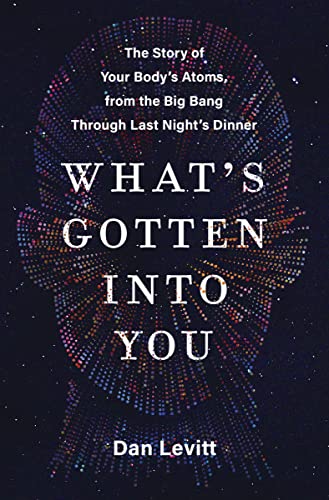What's Gotten Into You: The Story of Your Body's Atoms, from the Big Bang Through Last Night's Dinner
amazon.com
What's Gotten Into You: The Story of Your Body's Atoms, from the Big Bang Through Last Night's Dinner

While teaching at Brandeis University, working other jobs, and tending her kids, she managed to squeeze out the time to write an exhaustive paper that wove together evidence for her thesis from many different fields. That, in and of itself, was unusual. At Berkeley, she had been shocked by what she called “academic apartheid.” She rarely saw
... See moreEven then plants faced unnerving challenges. In fact, if you stop to think about it, you may wonder how they survive at all. To make it in this world, they have to begin their lives by taking a stand. They must commit to living out their days in a single spot, with no option to change their minds, much less flee. They are forced to cope with
... See moreOnce photosynthesis entered the picture, life on Earth was no longer solely dependent on whatever chemical energy it could scrounge up on the Earth’s surface. Life could draw vastly more energy from the fusion of hydrogen into helium, over 90 million miles away in the Sun. All the energy we expend during our existence was emitted as light from our
... See moreTwo of Liebig’s former students, Carl von Voit and Max Joseph Pettenkofer, conducted an experiment that turned out to be equally damaging.26 They built a sealed room, “a respiration chamber,” that was large enough for a person to live in for days, and furnished it with a table, bed, and chair. But they didn’t ask their experimental subjects just to
... See moreAfter months of work, they were thrilled to identify the large enzyme at the heart of photosynthesis. Mercifully, its inelegant name—ribulose-1,5-bisphosphate carboxylase oxygenase—was later shortened to Rubisco. It’s the first molecule in most plants and algae that grabs carbon dioxide to begin making glucose. Benson was amazed to find that
... See moreMelosh, an expert on crater formation, had previously calculated that, indeed, it was possible that a large impact on Mars would not vaporize or melt all of the nearby rock. Instead, it would hurl some hunks into space, and toward Earth, like bits of pasta sauce launched into the air by a fallen meatball. Could life hidden in the cracks of these
... See moreMany believe the most probable scenario is that, once organic complexity evolved—somewhere on Earth or possibly on Mars—membranes captured a small number of molecules. Those membranes were permeable enough that some other molecules could enter, furnishing raw materials for replication and for fuel. When those proto-cells grew too large for their
... See moreIntriguingly, clusters of iron and sulfur atoms lie at the heart of many of our most critical enzymes and at the centers of mitochondria, the power plants in our cells that create energy. In fact, genetic defects that interfere with our ability to make clusters of iron sulfur
You take about twenty thousand breaths a day just to supply these former bacteria with the oxygen they need to burn sugar to produce energy for you. If you spread out all your mitochondria side by side, they would cover two basketball courts. Altogether, about a quadrillion47 of them keep you moving.